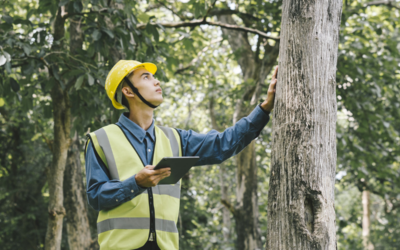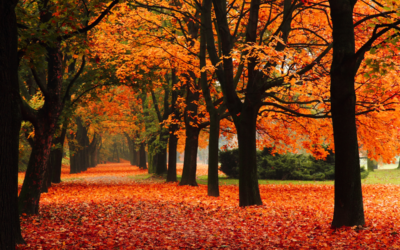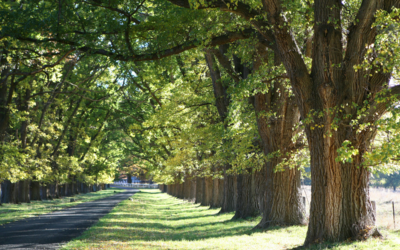Just as knowing your body and how to take care of it, learning the parts of a tree and the roles they play can help you keep your trees healthy and in good shape. Today, we’ll take a look at the tree’s most fundamental structure, it’s trunk and branches.
The Tree’s Core
A tree’s trunk and branches serve a dual purpose. On the one hand, they’re like the tree’s skeleton, the things that keep it upright and functional. On the other, they’re the conduit for delivering nutrition to keep the tree healthy and growing.
The trunk and branches are composed of four layers, each with specific purpose.
The Heartwood
The heartwood is the tree’s support system. It’s composed of clusters of dead cells arranged in hollow, needle-like clusters of cellulose fibers. Those interwoven fibers are bound together with lignin, a glue-like substance that gives the heartwood the strength to support enormous weight yet remain flexible enough to bend in all but the strongest winds without breaking.
Heartwood is the part of the tree trunk used for lumber. It has been used in construction since prehistoric times and remains one of the most popular building materials today. Its interlocking fiber structure (the wood’s grain) gives it strength capable of supporting tremendous loads. Properly engineered, a wood structure is comparable in strength to steel while being lighter, easier to work, less expensive…and a completely renewable resource.
The Sapwood
Sapwood carries water upward toward the tree’s leaves. It grows as new wood in a ring around the heartwood, eventually dying and forming the familiar growth rings of a tree.
The Vascular Cambium
The vascular cambium is the zone where the tree’s growth occurs. The inner surface is the xylem, vessels that transport water and nutrients up from the roots to the leaves. The outer layer is called the phloem. It moves nutrients downward from the leaves to the roots. This vascular layer is often called the inner bark because as it grows, its outer part dies and forms new outer bark.
The Outer or Cork Cambium
This is the part of the tree we normally think of as its bark. Much like human skin, it protects the tree from outside elements. It keeps excess moisture out and holds it in during dry spells. It acts as insulation against both cold and heat and protects the tree from insects.
Depending on the species, the outer bark can be thin and smooth like on aspen and birch trees, or very thick, as in oak trees. While all trees have a cork layer, it’s the cork oak that is the source for most commercial cork. That’s because the spongy area where the inner cambium transitions to outer bark is very thick and can be removed without causing damage to the tree. On the other hand, the cork tree is a different species that gets its common name from its bark’s resemblance to the cork oak but isn’t thick enough for commercial use.



